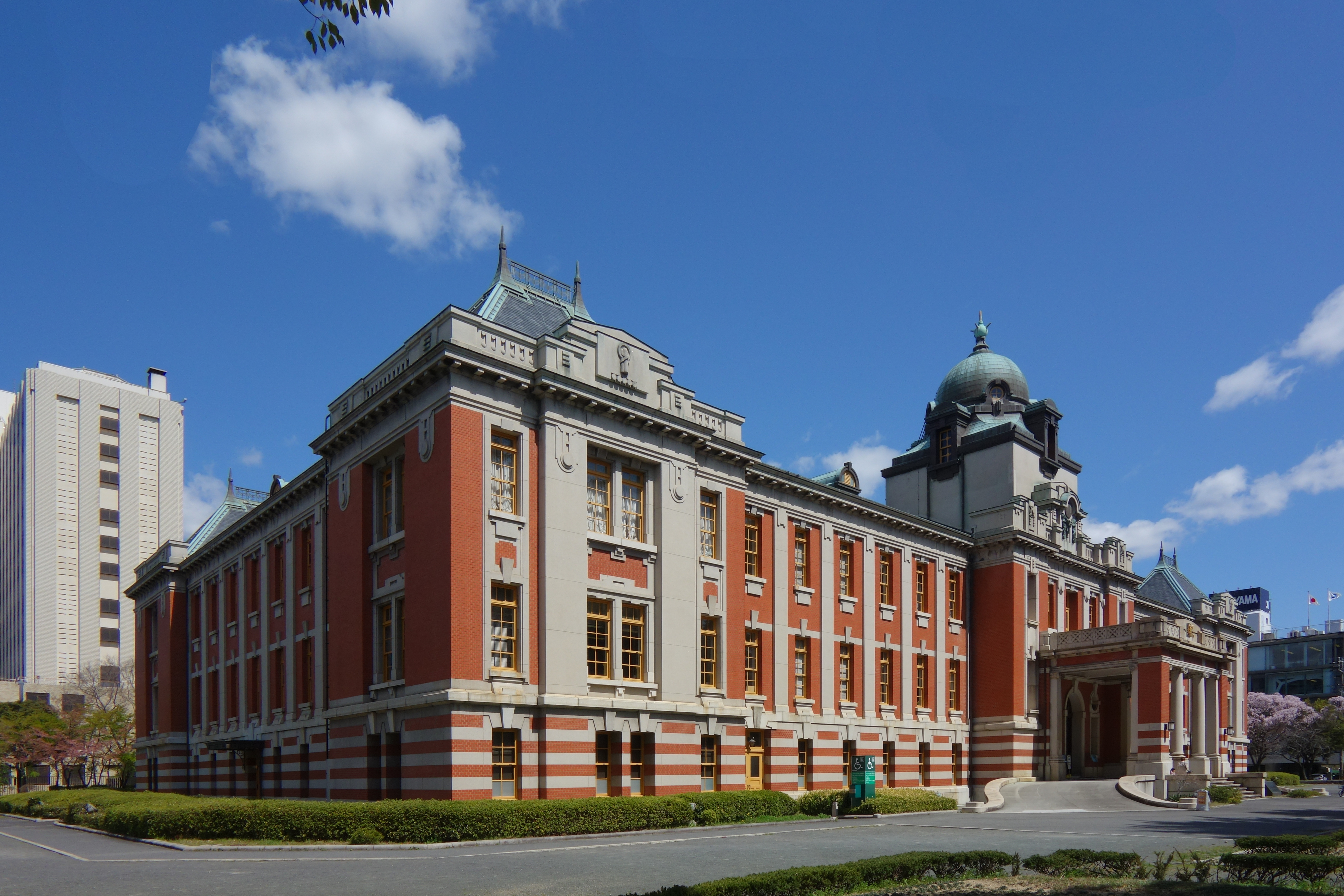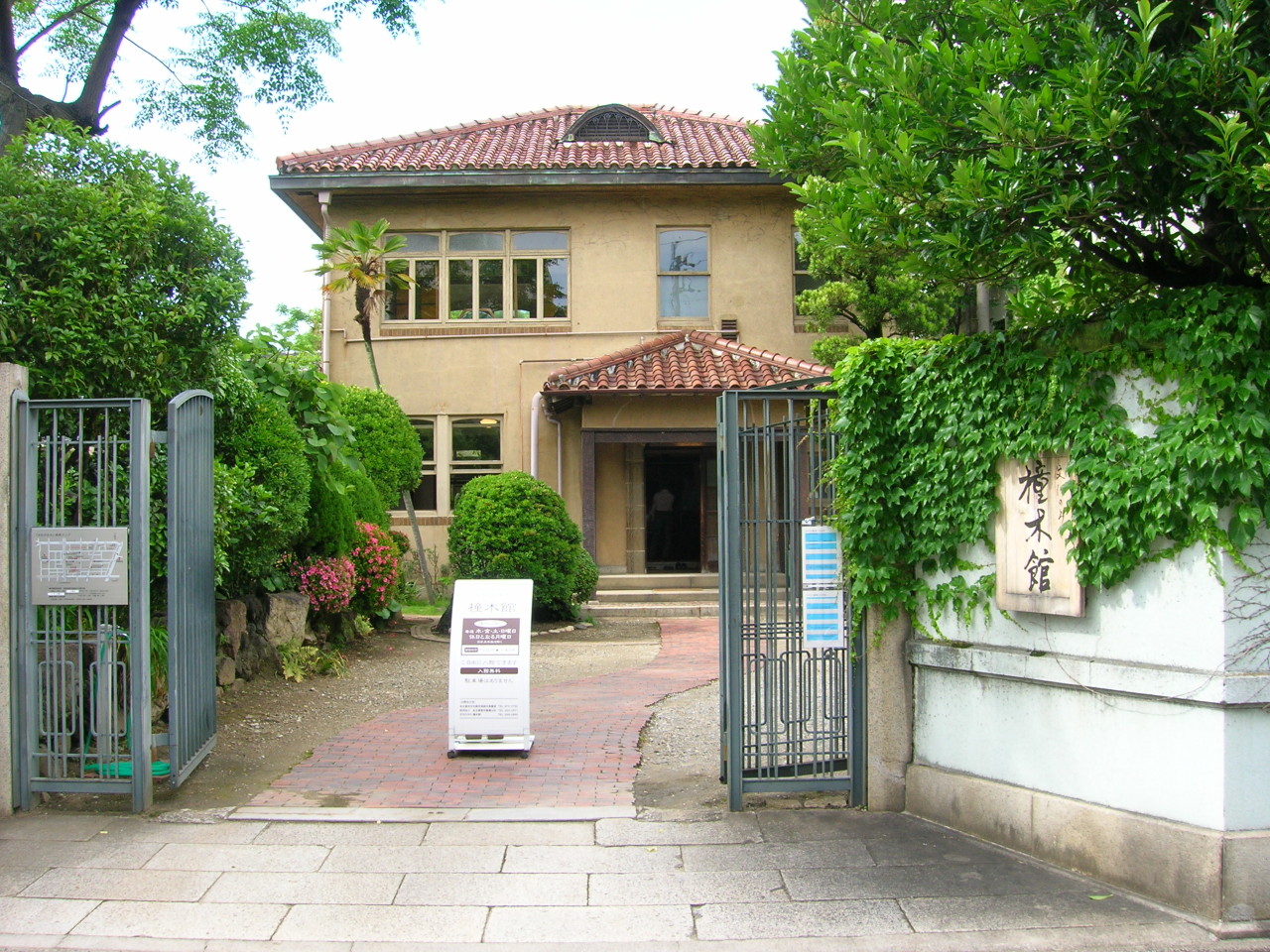Cultural Path on:
[Wikipedia]
[Google]
[Amazon]







 The Cultural Path (文化のみち, ''Bunka-no-michi'') is located between Naka-ku and Higashi-ku in the centre of
The Cultural Path (文化のみち, ''Bunka-no-michi'') is located between Naka-ku and Higashi-ku in the centre of
Nagoya International Center , Nagoya’s Cultural Path
Tourism Aichi , Cultural Path
History of Nagoya Tourist attractions in Nagoya





 The Cultural Path (文化のみち, ''Bunka-no-michi'') is located between Naka-ku and Higashi-ku in the centre of
The Cultural Path (文化のみち, ''Bunka-no-michi'') is located between Naka-ku and Higashi-ku in the centre of Nagoya
is the largest city in the Chūbu region, the fourth-most populous city and third most populous urban area in Japan, with a population of 2.3million in 2020. Located on the Pacific coast in central Honshu, it is the capital and the most po ...
, Japan. It shows a number of historic buildings that are under heritage protection.
The area was designated in 1999. The area's historic buildings range back from the Edo period
The or is the period between 1603 and 1867 in the history of Japan, when Japan was under the rule of the Tokugawa shogunate and the country's 300 regional '' daimyo''. Emerging from the chaos of the Sengoku period, the Edo period was characte ...
to the Meiji era and Taishō era
The was a period in the history of Japan dating from 30 July 1912 to 25 December 1926, coinciding with the reign of Emperor Taishō. The new emperor was a sickly man, which prompted the shift in political power from the old oligarchic group of ...
of the 1920s. Included in the list are mansions, government buildings, temples, and shrines. Many of them are registered as Tangible Cultural Property.
List of such historic monuments
Brick and concrete buildings
*Nagoya City Hall
is the city hall of the city of Nagoya, Japan.
It is designed in the Imperial Crown style, a fusion Japanese and modern style. It survived the bombings of World War II and is registered as a Tangible Cultural Property of Japan.
It is located ...
main building, from 1933, Registered Tangible Cultural Property Important Urban Landscape Building
* Aichi Prefectural Government Office
The Aichi Prefectural Government Office (愛知県庁 Aichi Kenchō) is the main building of the government of Aichi Prefecture. It is located in the city of Nagoya.
History
The building was constructed before the Second World War and is in th ...
, from 1938, Registered Tangible Cultural Property Important Urban Landscape Building
* former Aichi Credit Unions Association hall, from 1933–38, today used as Aichi Prefectural Office Ōtsubashi branch
* former Nagoya Court of Appeal district courthouse, from 1922, designated as an Important Cultural Property, today used as Nagoya City Archives
Nagoya City Archives (名古屋市市政資料館) is a historic building located in the city of Nagoya, central Japan.
It was constructed in 1922 during the Taishō era
The was a period in the history of Japan dating from 30 July 1912 to 25 ...
and municipal museum
* Kinjō Gakuin High School Keikō-kan Auditorium. 1936, Registered Tangible Cultural Property Important Urban Landscape Building
* Nagoya Ceramics Hall, 1932, architectural expressionism Art Deco design by Ichiei Takasu, Important Landscape Building
* Nagoya Municipal Tsutsui Elementary School, 1936, the only remaining pre-war primary school building in the city
* Tokai Gakuen Auditorium, 1931, Registered Tangible Cultural Property Important Urban Landscape Building
* former mansion of Nagoya mayor Toranosuke Okita, from 1920, today used as Aichi Prefecture Lawmakers Hall
Wooden buildings
*Kenchū-ji
Kenchū-ji (建中寺) is a Jōdo-shū Buddhist temple in Tsutsui, Higashi-ku, Nagoya, central Japan. Starting in the Edo period, the mausoleums of the lords of the Owari Domain were located there, making it the '' Bodaiji'' of the Owari Tokuga ...
, from 1651, Registered Tangible Cultural Property, Designated Prefectural Cultural Property, Designated Cultural Property and Important Urban Landscape Building
* Sadaso-in, from 1608, built under Tokugawa Yoshimichi
* old Toyoda family house wall (Risaburo Toyoda Teiato), from 1918, Important Urban landscape Building with remaining gate and fence
* old restaurant - Camphor, Taishō era, Important Urban landscape Building
* former Nakai Onorejiro House, from 1911, today used as a restaurant
* former Tetsujiro Haruta House, from 1925, Important Traditional Building and Landscape Structure, European-style building of Design and Preservation
* former Sasuke Toyoda House, from 1923, Sakichi Toyoda
was a Japanese inventor and industrialist. He was born in Kosai, Shizuoka. The son of a farmer and sought-after carpenter, he started the Toyoda family companies. His son, Kiichiro Toyoda, would later establish Japan's largest automaker, Toyo ...
's brother, traditional building
* former Sadayakko Kawakami House from 1920, today Futaba Museum of Culture, Registered Tangible Cultural Property and Important Landscape Building
* former Tamesaburo Imoto House, from 1926, today Shumoku Museum of Culture, Specified Tangible Cultural Heritage, Important Landscape Building, traditional building of townscape preservation district
* former Okaya Sosuke House, from 1920, remaining tearoom, storehouse and garden
* Chikara-machi Nagayamon, from mid-Edo period, remaining gate of Samurai mansion
* Catholic Chikaramachi Church
The is one of the oldest Christian churches in the city of Nagoya, central Japan.
The official name is .
History
The church was established in 1888 by the French Catholic missionary Fr. Augustin Tulpin, thus making it the oldest church in Aich ...
, from 1904, Important Urban Landscape Building, oldest Catholic church in the city
* Omori's Residence, from 1916, Important Urban Landscape Building
* Ito house, from early Taishō era, Important Urban Landscape Building
* Chokyū-ji, from 1610, temple
Museums
* Nagoya Castle *Tokugawa Art Museum
The is a private art museum, located on the former '' Ōzone Shimoyashiki'' compound in Nagoya, central Japan. Its collection contains more than 12,000 items, including swords, armor, Noh costumes and masks, lacquer furniture, Chinese and Japane ...
, from 1935, museum exhibiting treasure of the Tokugawa Owari lords
* Hōsa Library
The Hōsa Library (蓬左文庫) is a library located on the compound of the '' Ōzone Shimoyashiki'' in Nagoya, central Japan.
History
Tokugawa Yoshinao, the first lord of the Owari Domain, established it as an official archive. It was transfe ...
, from 1950, public library from the collection of the Owari Tokugawa family
* Rakushi Museum, from 1987, exhibition with a focus on MatsuHana hall in the Edo era and tea utensils
* Hori Museum, from 2006, Setsuko Migishi, Yuzo Saeki, Foujita Fujita, Ryuzaburo Umehara exhibited works
* Bank of Tokyo-Mitsubishi UFJ Currency Museum, moved in spring of 2009 to the present location, opened in 1961 as the "Tokai Bank Money Museum"
Other
*Tokugawa Garden
The Tokugawa Garden (徳川園 Tokugawa-en) is a Japanese garden in the city of Nagoya, central Japan. It is located next to the Tokugawa Art Museum.
History
In the early Edo period (1603-1867), Tokugawa Mitsutomo (1625-1700), the second lo ...
, gardens of the Tokugawa mansion around the Tokugawa museum
* Sannomaru garden, from 1881, relocated the part of the Nagoya Castle Ninomaru Gardens, including the former army officers club Kaikosha Nantei fortification
* Nanao Shrine, founded in early 16th century, Owari clan chief retainer Naruse family
* Akatsuka Shinmeisha, reconstructed under Tokugawa Yoshinao in 1619 (Kanei 5), some remaining buildings that survived the war
* Crescent mound, from 1743, Basho Matsuo fifty years death anniversary monument
External links
{{commonscat-inlineNagoya International Center , Nagoya’s Cultural Path
Tourism Aichi , Cultural Path
History of Nagoya Tourist attractions in Nagoya